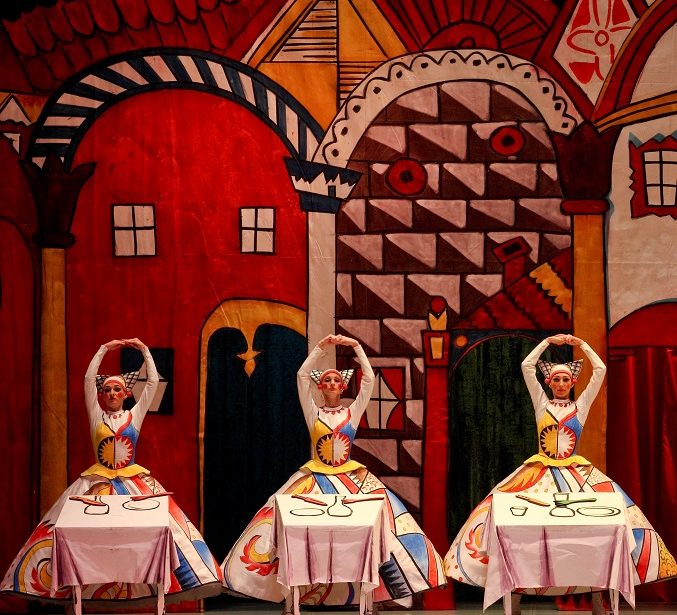Ballet Russes’ Heritage: ballets “The Tale of the Buffoon” (Prokofiev/Miroshnichenko) and “Les Noces” (Stravinsky/Kylian) by Perm Ballet

On November 28th, the Festival will premiėre the Ballet Russes’ Heritage: ballets “The Tale of the Buffoon” (Prokofiev/Miroshnichenko) and “Les Noces” (Stravinsky/Kylian) on the renovated stage of Bolshoi Drama Theatre by Perm Academic Theatre of Opera and Ballet.
Igor Stravinsky
LEC NOCES
Les Noces, staged by Bronislava Nijinska, was a great success when it was first performed at the Theatre de la Gaite-Lyrique in Paris in 1923. This staging became Stravinsky’s second ballet after The Rite of Spring that demanded brand new, modern choreographic language which would be crossing of folk Russian art and Soviet avant-garde of the 1920-s.
Subsequent generations of choreographers have also based their productions on Igor Stravinsky’s score. The production that garnered the most resounding success was Jiři Kylian’s, when he staged Les Noces for the Nederlands Dans Theater (NDT) in 1982. The choreographer found a way to combine musical layer with dancing so that they didn’t block each other, and intertwined, giving rise to a new image. Kilian was guided by a subtitle which was written down in the score: “Les Noces — a small mad wedding”. The factors that persuaded Kylian to grant the Perm Ballet performance rights for his production were the company’s high degree of professionalism and the remarkable story of how ballet has flourished in Perm, once a closed city of the USSR.
Sergei Prokofiev
THE TALE OF THE BUFFOON
On the back of the success of The Rite of Spring, in 1914 Sergei Diaghilev commissioned Sergei Prokofiev to compose a ballet in the Russian farcical style, and suggested a collection of folk tales from the Perm region as inspiration. After selecting several stories about the Buffoon, Prokofiev wrote the libretto and quickly finished the piano reduction score of the ballet. The work’s completion was interrupted by World War I; the premiere did not occur until 1921. Having all his ballet masters by then, Diaghilev charged artist Mikhail Larionov and dancer Tadeusz Sławiński with creating the choreography and designing the show. Paris and London reacted favourably to the show, but since then The Tale of the Buffoon has fallen off the radar for choreographers. After a premiere the score was “lost”. It was only in 1970-s that Gennady Rozhdestvensky for the first time performed it and wrote it down, then again it has been forgotten for a long time. It is not that “gentle” attractive Prokofiev so beloved to listen and play. In this ballet Prokofiev tries to move in the direction of a dissonance, polyrhythm. He tries to go in the direction of masterpieces of Stravinsky — his main rival. And it is not occasionally that they meet at that moment in Paris and both reveal in their notes that after listening to The Tale of the Buffoon and Les Noces they understood that underestimated each other. In 2011, Alexey Miroshnichenko created a new choreography. The show is staged using sets and costumes reconstructed from Larionov’s sketches. The Perm staging of The Tale of the Buffoon was nominated to “The Gold Mask” of a 2011-2012 season in six nominations. Theodor Currentzis became the winner of an award in the nomination “Ballet / Work of the Conductor”.